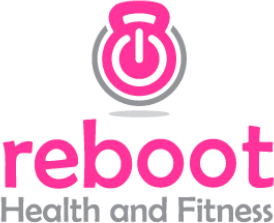Spotlight - The Elderly
The Elderly
Often this group can be characterised as having issues with sarcopenia (loss of muscle mass and strength) and possibly osteopenia or even osteoperosis. Additionally cognitive decline can add to the challenges faced.
**************************
Let’s take a deeper look…
As we age we all suffer sarcopenia, or a loss of muscle size and strength, it’s a natural ageing process as we are no longer “in our prime” - but this can be offset by strength (resistance) training. Older people who do not strength train can become frail and less mobile, which leads to loss of function (think getting in and out of chairs, being able to stand up from the floor) plus they are three times more likely to suffer a fall (Landi et al. 2012).
Falls are also associated with fractures and broken bones especially if there is any loss of bone mineral density (osteoporosis). Plus such an event can be the start of a downward spiral for an elderly person; affecting confidence, anxiety, depression and social withdrawal (Tinetti & Williams 1998).
With ageing, there is also a reduced response of skeletal muscle to anabolic stimuli - interestingly this means that there is an increased resistance (or a reduced response) to 1) training (Breen & Phillips 2011), to 2) Essential Amino Acids (Cuthbertson et al. 2005) and even to 3) insulin (Rasmussen et al. 2006).
In addition, cognitive decline can mean that conceptual reasoning, memory and processing speed may decline gradually with ageing which can affect an older adult’s every day function and quality of life (Harada et al. 2013). Plus having Type 2 Diabetes almost doubles the risk of dementia (Ott 1999).
So, it all sounds a bit doom and gloom, especially if we consider that our peak for muscle mass is probably around age 20-30, and declines about 1% a year in the untrained!
**************************
What can we do about it?
Well actually, we can’t turn into Peter Pan and be young forever but there is plenty that we can do to help ourselves remain active and healthy into our senior years. It’s also never too late to start, so for those already over the age of 50 or 60 - don’t give up - keep reading.
Recommended Actions
Strength train
Even though there is a potential higher resistance of the muscles to strength training, exercising with weights will still increase / maintain strength helping to keep the older person independent and at a lower risk of falls. In addition weight bearing activity or resistance exercise will help to improve bone density. So get walking, practise getting up out of the chair or from the floor - with no hands! Or consider a gym membership - it’s not just for the youngsters and can be very empowering.
Increase Protein
Protein is satiating, important for our immune system, for wound healing, bone health and weight management. Due to the reduced muscle response in the elderly to protein intake, it is recommended that at least one meal per day contains 0.4-0.6g/Kg of body weight of protein (Arnal et al. 1999). So if you are for example 65Kg, this means 33g of protein in one meal - which is for example, 140g chicken breast or 180g salmon filet or 25g Whey isolate protein powder. Multiple times a day would be even more beneficial.
Fish Oils
Fish Oils are just all-round good!! They help with cardiovascular health, joint health, anabolic resistance and immunity. Supplementing with EPA / DHA has been shown to increase muscle sensitivity in 65+ year olds (Smith et al. 2015, dacoit et al. 2017). In addition, early supplementation of Omega-3 may have a benefit in treating or preventing Neurodegenerative diseases (Levi et al. 2006, Thomas et al. 2015). It’s unknown the exact recommended dosage but more than 2000mg per day (of EPA/DHA) is the minimum recommended …..up to 12,000mg! * Consult your doctor if taking any blood thinning agents such as aspirin or warfarin.
Vitamin D
Vitamin D is required for bone formation. However, 35%-90% of the institutionalised elderly are estimated to be Vitamin D deficient (Compher et al. 1998). A meta-analysis of 6 studies showed significant benefit at at least one site with Vitamin D supplementation (Reid, Bolland & Grey 2014). It is best to find out your own existing personal levels (optimal is >25ng/mL), and if necessary take an increased dose to reach this optimal level and then a maintenance daily dose of about 2,000IU Vitamin D3.
Multivitamin with Calcium
Variety in the diet of an elderly person can diminish due to issues such as changing taste sensation, side effects of certain medications, dental problems, reduced motivation to prepare foods - and so on. Therefore it might be prudent to take a multivitamin to reduce the risk of other deficiencies. One with added Calcium is recommended due to the potential increased effects on bone mineral density. A deficiency in Calcium (& Vitamin D) can cause an increase in the parathyroid hormone which causes a release of calcium from the bones (Lips 2001). The RNI (recommended nutrient intake) of Calcium for females 50+ is 1200mg/ day and for males 50+ 1000mg/day.
Creatine
This is a somewhat unknown supplement but hugely researched with clear benefits to many population groups. A meta-analysis showed enhanced muscle gain, enhanced strength and enhanced functional performance with creatine supplementation in older adults (Devries & Phillips 2014). In addition there is research showing a potential benefit in cognitive function and neuroprotective effects of creatine supplementation. There is more research to be done in this area as some studies show benefits in cognitive function and others show no effects. But given the clear benefits against sarcopenia it really is worth trying. There are few downsides. The recommended dose is 5g/day taken with carbohydrates.
